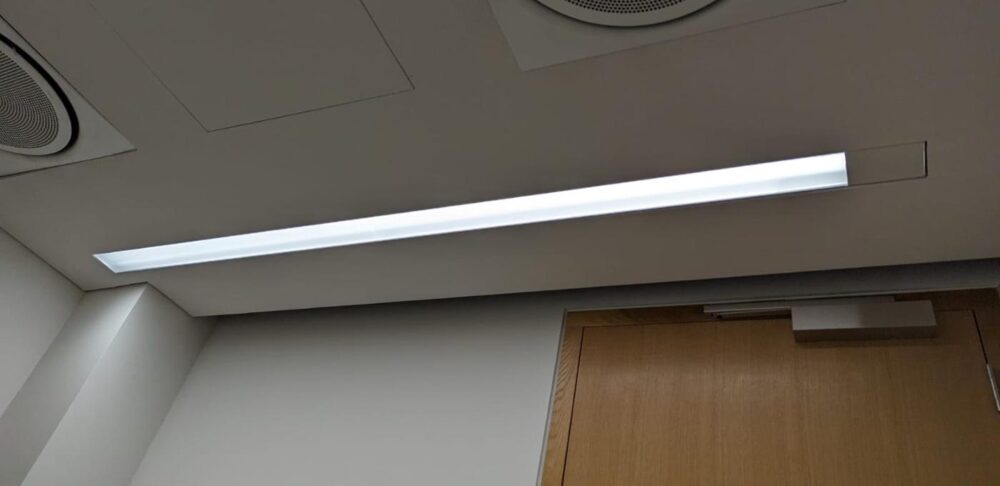In all renovation projects, there will be elements that have reached their end of life and need to be replaced or brought up to modern standards. This process is known as secondary replacement demand. It can introduce time and cost delays into projects, but also deliver enhancements in terms of performance and energy efficiency.
In lighting, all too often, fixtures are replaced even though their housings are still perfectly sound, simply because their electrical components are outdated or the lamp is inefficient. Consigning perfectly good light fixtures to the landfill is wasteful when an alternative solution is to refurbish and update their internal components, bringing them up to current safety and energy efficiency standards and reusing the housing.
Indeed, there are many compelling reasons why businesses are increasingly turning to refurbished lighting in their renovation projects, including:
1. Long-term cost savings
Opting to refurbish existing light fixtures is a game-changer in terms of long-term cost savings. Not only does replacing outdated fixtures with upgraded modules without changing the housings help businesses to cut their energy use by up to 80%, but they also save on maintenance and, of course, the cost of purchasing new lighting solutions. Additionally, savings are made through removing the need to transport waste materials or pay for their disposal.
2. Achievement of environmental targets
All businesses are required by law to implement achievable environmental targets in an effort to help the country achieve Net Zero by 2050. Swapping from a replacement mindset to refurbishing existing light fixtures reduces waste and reuses or repurposes the vast majority of lighting materials. It also minimises the environmental cost of manufacturing and utilises less energy going forward. Collectively, these benefits accumulate to make refurbished lighting a sustainability essential.
3. Extending the life of high-quality goods
Light fixtures that are installed in period business premises are handcrafted from high-quality materials. This means that they will, with the correct care and maintenance, outlast modern mass-produced equivalents. By restoring these period fixtures rather than replacing them, their functionality and aesthetic appearance are enhanced, and they are able to be given a second life. Extending their in-service period not only makes sense from a cost and environmental perspective but also maintains the historical integrity of these properties.
4. Easier integration into project plans
Large-scale lighting installations can be disruptive to project plans and create logistical challenges for businesses. Conversely, opting for refurbished lighting can help to minimise this disruption. Structural and wiring changes can be incorporated into the main project to ease the logistical challenge and allow work to take place incrementally. As the process of refurbishment tends to reuse existing light housing and infrastructure, the lead time for materials is reduced and delays can be avoided, helping project managers to achieve their PCT parameters. In-situ remanufacturing kits can be supplied, allowing you to target one area at a time, and work can continue mostly uninterrupted.
5. Reputational boost
When operating in a competitive marketplace, maintaining a strong reputation is essential. With customers increasingly opting to support businesses that share their ethical values, pioneering lighting refurbishment rather than replacement is an excellent way to demonstrate a deep commitment to environmental sustainability.
Conclusion
Making the change to refurbished lighting should not be viewed solely as a cost-saving measure or a temporary solution. It is a powerful alternative that will deliver significant returns, allowing businesses to achieve their environmental targets, reduce their energy costs and enhance their reputational standing.


